
Official Edgar Rice Burroughs Tribute Site
Since 1996 ~ Over 15,000 Webpages in Archive
Volume 7856

Official Edgar Rice Burroughs Tribute Site
Since 1996 ~ Over 15,000 Webpages in Archive
Volume 7856
![]()
THE DEN VALDRON INTERVIEW
How Did You Discover Edgar Rice
Burroughs? ~ Part I
 .
.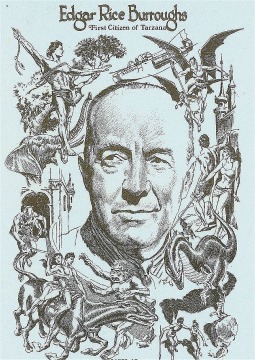
![]()
|
PART I |
PART II |
PART III |
In ERBzine.com |
Den Valdron, also known as D.G. Valdron, is a friend and prolific writer and frequent contributor to ERBzine exploring the worlds of Edgar Rice Burroughs, Otis Adelbert Kline, Lin Carter, Leigh Brackett and others. In addition to many articles, he also has an online novel, Torakar of Mars on ERBzine. Outside of the world of Edgar Rice Burroughs and colleagues, heís a prolific writer of fiction and nonfiction in his own right, with twenty books in publication. Recently, he was interviewed by Katherine Martens, we are proud to present this interview.
How did you discover Edgar Rice Burroughs?
Well, I suppose I grew up with Tarzan. Back when I was a little kid, very small, Ron Ely was playing Tarzan on television, George of the Jungle was a Saturday morning Cartoon. Iím not sure if they were still making Tarzan movies, but the idea of Tarzan was very much alive. I remember Carry on Up the Jungle, with its Tarzan character. There were the comic strips. Tarzan back in the second half of the 20th century was very much a part of the psychic landscape.But honestly, I didnít pay that much attention to it. Tarzan was part of the landscape, nothing special. Where I really got into Tarzan was at the local library. I remember it clearly, they had a row of these red cloth-bound Tarzan books right by themselves, beside the window. Not the whole set, but about a dozen of them. I can still visualize how they looked, the bright red cloth, all matching, all the same size, distinguished only by black titles, sitting on polished pale wood, held together by these little flat metal book ends, the whole set almost luminous in the afternoon light shining through the window. It drew me, I picked one up at random, and I discovered Tarzan and the Ant Men.
Tarzan and the Ant Men?
Yeah, itís a later Tarzan book, he crashes his plane and he encounters this civilization of tiny humans who ride tiny antelope and have cities and wars. I guess, eventually, Burroughs ran out things for a giant Tarzan to do, so he shrank him down to Ant-Men size, and then itís straight up standard adventure. Itís probably far from Burroughs best book, I think he was getting pretty formulaic by that time, and the well was getting dry. But this was a Tarzan Iíd never seen before, never imagined. After that it was Tarzan the Terrible, Tarzan and the Romans (Tarzan and the Lost Empire), Tarzan at the Earthís Core... Just these insane flights of exotic fantasy.I donít think I really got into Tarzan as a power fantasy, or an escape from civilization. Iím not a cottager, I donít go camping. I grew up close enough to the deep impenetrable forest, we cut wood there, I donít need it. Itís just a place. I wasnít into mysterious Africa, even then, a lot of that was antiquated.
But what amazed me, what enthralled me was when Tarzan went to really strange places, met strange new peoples. Burroughs described them vividly, with such warmth. It was amazing.
Then a bookstore opened up in the next town, this was back in the 70s or 80s, Burroughs was having a revival, a lot of the old pulps were getting a second lease on life. I discovered A Princess of Mars, and that was it. I forgot all about Tarzan. John Carter was it! The very best of Tarzan and none of the uninteresting bits. Iím still a John Carter fan, I think those are his best books, I love them to this day.
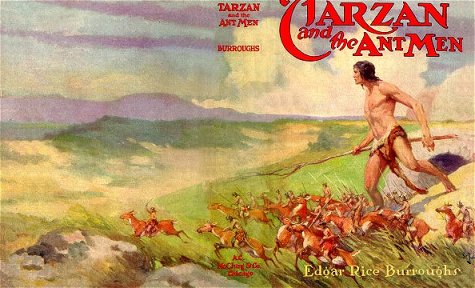
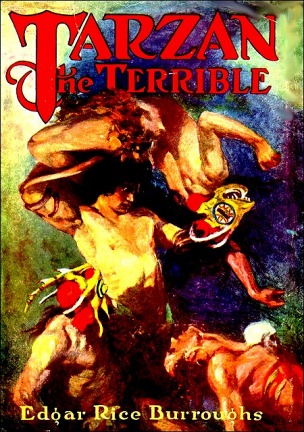
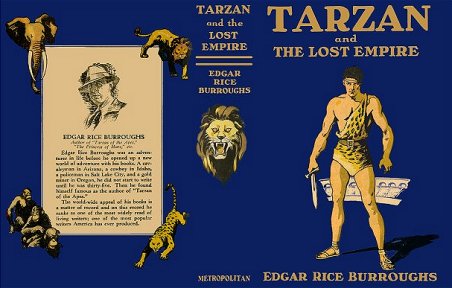
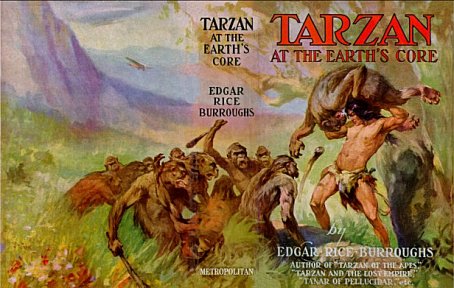
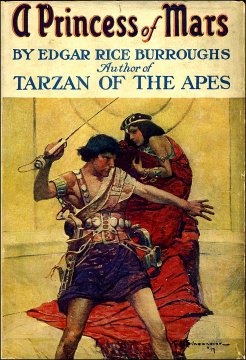
What did you love about them?
Iíll be controversial, but I think Burroughs was really the first writer to describe aliens. Remember H.G. Wells, War of the Worlds? His Martians are basically monsters. Theyíre strange, theyíre octopoid, tentacles and beaks, and all that. But we have no idea who they are, what culture they have, how they think, or relate, or reproduce. In the end, Wellsí Martians are ciphers. Theyíre literally the scary blank spots on the map ĎHere be Dragons/Monstersí we donít know them, canít understand them.Now look at Burroughs - in one of his novels, Tarzan at the Earthís Core, the heroes get captured by these lizard men called Horribs. Itís a relatively brief sequence. They get captured, they escape. But before they do, we get to learn all about Horribs, how they dress, how they raise their children, how they live, their world view. It was great!
I read through a whole bunch of Pellucidar books looking for a reappearance of the Horribs, what they were up to, how they got along, what they were going to do next. I still find it amazing that he spent so much time developing what was basically a throwaway monster.
But thatís Burroughs. He made his aliens, his creatures come alive. Look at Princess of Mars, look at the Tharks. Theyíre not flat monsters like Wellsí Martians. They come alive. When weíre among the Tharks, we learn about their society their economy, their weapons, how they raise their children, how they organize themselves. We learn about their politics, their relationships, how they deal with each other. Theyíre aliens, genuine aliens, but theyíre individuals, in their alien society, with their own ideals and ambitions, a philosophy and a point of view. Thatís amazing. Itís the first genuine, real portrait of actual aliens in literature I think.
And Burroughs is sympathetic. The Tharks arenít cartoons, he doesnít mock them, or lionize them. I think itís telling that when Tharkís society, their life choices, are criticized, itís not by John Carter, but by one of the Tharks, Tars Tarkas, themselves, who goes ďYou know, sometimes who we are, the way we are, weíre dickheads.Ē But Tarkas is also the one who affirms the values of his society.
I suppose looking back, itís not completely original. I think the physical descriptions were inspired somewhat by various insects, blown up huge. And the Thark culture borrowed strongly from American Indians, both the genuine Indigenous folk and the white understanding and preconceptions of the time. But thereís no such thing as genuine originality, if there was, weíd burn it at the stake. Most of what we think of as originality is actually just ideas cross fertilizing and repackaging. So I give Burroughs full marks. He still did something, he still did things that no one else had really done before.
Burroughs did that over and over, he created all these races, civilizations, and brought them to life with this anthropological attention to detail, and a genuine sympathy and empathy for his cultures. They can be the bad guys, but he never disrespects them.
I think that heís underrated as a science fiction writer. Heís not writing hard SF, but heís doing anthropological or sociological SF in his worlds. I think thatís overlooked.
I suppose not all of itís great. Any really prolific writer ends up with some stuff out there thatís embarrassing. Burroughs has his share of hackwork and embarrassments. Thereís a certainly a lot of criticisms that can be made, particularly of his later work, and most of them are dead on. Certainly I think that in this modern age, the concept of Tarzan is deeply problematic and open to attack, and his vision of Africa, lost civilizations apart, is hopelessly outdated and arguably racist.
Honestly, if everyone gets judged on their worst work, then not one of us will survive. Nobody then, nobody now. If weíre measured on our failures, our shortcomings, our mediocre beginnings and our exhausted declines, then we all fail. Everyone working then. Everyone working now. All those award winning writers and film makers, the Oscar Winners, Pulitzers, Hugos, whatever, judge them by their weakest works, theyíre all hacks. Itís a no-win situation.
We take the good with the bad. We need to. We judge by peopleís best. Or at least, we need to include the best in the judgment.
Burroughs, I think his best stuff... heís got something real. I think heís got something remarkable.
Did they inspire you to be a writer yourself?
I think that John Carter is a little bit of a role model for life. Carter is utterly open minded, he doesnít care who you are, Green Thark, First Born, Okarian, Thern, heíll just make friends with anyone, and he sees qualities to respect. Cast into an alien civilization, he embraces it. Heís an incorrigible optimist, practical to the point of being ruthless, decisive, a little bit of a homicidal maniac, and a hopeless romantic.Heís a better role model, I think, than John Galt or anyone in Atlas Shrugged. We could all do a lot worse.
But no, I donít think Burroughs inspired me to write, not specifically. I was much more sci fi and space opera. I think the impulse to be a writer came from all sorts of sources, Burroughs part of it, but Asimov, Clark, Heinlein, Lovecraft, DeFoe, Swift, Twain, Kirkwood, Updike, Hammet. I was reading voraciously, it all kind of bubbled up.
I think if Burroughs influenced me, it was with world building, seeing aliens and alien civilizations sympathetically, other cultures, other peoples. No matter how strange the Ďotherí is, theyíre a person, theyíre someone, they come from somewhere.
Maybe the conviction that a story should actually be fun and move along quickly? There might have been a bit of ERB in there.
When did you start writing?
Oh back when I was a little kid, four years old, dragging my brother in his high chair to the blackboard, so that I could draw Batman adventures. I wanted to tell stories even then. I donít think my Batman story then was all that good - I remember the Batmobile was chasing bad guys on the side of a mountain and they went tumbling down, I was four years old, thinks like plot, sequence, logic... Not strong.I tried writing off and on. I started to do stories when I was thirteen, I published a couple in the local newspaper. But it was an off and on thing, a lot of false starts. A novel that got half written. Youíre growing up, youíre going to school, working, living. That gets in the way.
It wasnít until my grandfather died, that I kind of did soul searching, and decided that I wanted to be a writer. I was kind of naive. I figured that I would write and sell a lot of short stories, move onto books, quit the day job. It doesnít turn out like that, not for most of us.
But I did progress. I wrote a lot, got published here and there. I built up a career, so slowly, it was hardly noticeable. But I did it.
Tell us about writing for ERBzine, how did that get started?
Thatís kind of an odd story. I need to explain a bit. I donít just write stories, I like to work things out. I have this pathological need, to worldbuild, more than that, to dissect worlds, to make sense of things. To figure things out.Anyway, I loved the Barsoom books, Iíd read them now and then. I had John Stanleyís Guide to Barsoom. Didnít really think much about it, but you know, read them a few times, you do get a sense of some of the geography - the snow capped Artolian mountains, the great Toonolian marshes, Gathol, etc.
Well, one day, online, I came across a topographic map of mars, one that showed the high lands, the lowlands, the mountains and the valleys. Mars, of course, has these northern lowlands, now thought to be the site of a Martian Ocean. And it has Valles Marinis, this incredible canyon, thousands of miles long, it would have been the last remnant of the Martian Ocean.
I had this idea - what if the Toonolian Marshes were actually Valles Marinis? Or part of Valles Marinis. In the books, extending east and west of the Marshes are these Canyonlands and forests, which are clearly shallow extensions.
That seemed like a cool notion, so I started looking at other Barsoomian geographical features, and trying to place them in relation to the Marshes - the Ďsnow capped Artolian mountainsí for instance are east of the Marshes. Well, due east of Valles Marinis are Olympus Mons, and a series of shield volcanoes on Tharsis plains, the tallest mountains on Mars. Thereís your snow capped peaks.
Gathol, Burroughs described it as a former solitary island, a seamount in a former Baroomian ocean... And over here, we find the Elysium volcanic mountain, a former seamount in a lost Martian ocean.
You could map Barsoom out loosely in terms of the broad geographical feature. Then you could look for similar geographical features on the real Mars... and theyíd be there!
It wasnít perfect, there was say a 15% margin of error, but yes, it was all there! The Toonolian Marshes, the Artolian Mountains, Gathol, the Gulf of Torquas, the Valley Dor, Valley of Lost Souls, you could even find the River Iss when you zoomed in on the Argyre basin that seemed to match for Dor, and worked your way outwards.
I didnít bother with trying to map out cities. Thatís where everyone else starts, and where they go wrong, I think. Itís a desert planet, cities can literally locate anywhere. So yes, you can make a map based on Burroughs relationships of cities to each other. I just took a different approach, orienting on the geographical landmarks and it worked startlingly well.
Is there any chance Burroughs knew what he was doing?
That he was using the real Mars?
Not a chance in hell. It wasnít until the Mars Global Surveyor in the late 1990's that they were able to photograph and radar map the planet in extreme detail and we really began to get a sense of what the planet was like and what its history was.Burroughs at the time was working off of Percival Lowellís theories and ideas of a dying desert Mars, with possible canals. There were a lot of astronomers drawing a ruddy mars crossed by canals, and itís pretty clear thatís what he was drawing on. He did his own maps, and theyíre based on what was around at the time.
So this is entirely a coincidence. The Universe is full of wonderful coincidences, and this is just another one, odd and astonishing that Burroughs fictional Mars can be mapped so closely on the real one.
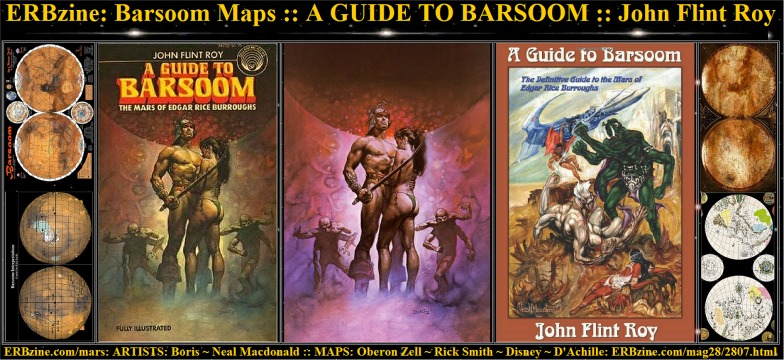
So you got it published in ERBzine?
Actually no. I spent about a week working on it, poring through the books and making notes, going over the online Mars maps - they had this tool where you could literally zoom into part of Mars and make out ancient rivers and shorelines, sand dunes... mostly boulders and craters.At the end of it, Iíd worked it all out. I felt very happy, very pleased with myself. Then because I had no one to show it to, I stuck it in my hard drive and forgot about it for a few years.
You forgot about it?
Honestly, I would do stuff like that all the time. Iíd write an analysis of the Godzilla Universe, or a chronology of Universal Monsters, something about Lost Continents. It wouldnít quite be fiction, wouldnít quite be fact, it would just be me just doing these strange little excursions. But I had no audience. So Iíd just do them for my own satisfaction, it was fun. And then Iíd tuck them away. Sometimes Iíd take them out to reread for entertainment. I suppose one of the reasons I kept them was the thought someone else might be entertained by one of them.It was my intermission from trying to write stories or novels, sometimes useful worldbuilding, sometimes a bit of fun. There was a satisfaction, a rewarding feeling for just doing these exercises, making sense of something. Thereís an elegance to it. So yeah, that was Matching Mars, a fun little project, tucked away and gathering dust for years.
How did you end up in ERBzine?
Oddly, a few years later, I ran across this Edgar Rice Burroughs site on the net, Bill Hillmanís site. I thought to myself it was pretty cool. I thought they might be entertained by this thing I had sitting in my hard drive, so sent it in.And he loved it! He published it. Then he said, ĎDo you have any more?í
I thought, ĎWow, someone likes this?í It was inspiring, so I wrote more. And more. Tons of stuff. It was a great excuse to dive back into Burroughs, and take some hard looks at the worlds he built.
And I wasnít the only one, there were guys like Rick Johnson and Sildan Christian who were doing this kind of thing. It was so amazing to find people who liked the same thing as I did. They were kindred spirit. I still consider them friends, and would love to meet them someday. Hell, I consider them kindred spirits, practically brothers. I imagine if we ever met that weíd have these wonderful sparkling conversations that no one else on earth would appreciate.
We explored history, biology, all kinds of topics. I did a lot of essays, maybe forty or so? Half a million words worth? Something like that.
Some of them Iím still particularly proud of. I kept filling in Martian geography, and I got into dissecting Barsoomian linguistics.
Deconstructing the language was fun, I remember this elation as I connected it all up and related it back to culture and religion. And with the geography and linguistics, that allowed me to extend, incorporating and connecting Wellsí Mars, Tolstoyís, Otis Klineís, even C.S. Lewisí.
It was at a point in my life when Iíd pretty much given up on writing. So it was really inspiring in. There was this book project Iíd worked on for years had fallen through, with nothing to show for it - just wasted time. Iíd written a couple of novels, they hadnít sold. I hadnít sold a story in years. As a writer, I was dead in the water. Career nowhere, no prospects, stick a fork in it, time to move on.
And suddenly, there was Bill Hillman, encouraging me to do the things that I loved most, and giving me this online space to do it. I think Bill changed my life. He gave me a purpose, a focus.
Some of them are kind of embarrassing, now, but you know - it was just crazy fun, writing every single one of them. Even the most embarrassing was wild fun to write. And the best of them - I think theyíre great.
Ultimately, it gave me the faith to publish collections of other pieces - Lost Continents, Greenland, Atlantis, Muppets, in a couple of books - Dawn of Cthulhu, and Fall of Atlantis. But Iím getting ahead of myself.
I think someday, Iíd like to take some of the best Baroomiads and publish them as a book, or a trilogy. But Iím in no hurry. Whenever Bill gets tired of hosting me.
You wrote a novel, Torakar of Mars? Itís on ERBzine.
Thereís an interesting story there. Iíd never met Bill Hillman, who ran ERBzine. We only knew each other online. As far as I knew, he lived down in Mexico, or Australia, or Texas.One day, as we were corresponding, we realized we were practically neighbors. He was in Brandon, Manitoba, I was in The Pas, Manitoba. We were less than four hours drive apart. In Canadian terms, thatís practically like living across the street.
I was amazed. I thought, hell, I have to meet this guy. So we jumped in a car and just drove down for a visit.
Bill was just an amazing guy. Sue-On, his wife, also amazing. They were musicians, restauranteur, theyíd traveled all over the world, their house was astonishing. Everywhere you looked was something just marvelous, every bit of it. These were people who had lived their lives so well, so wonderfully. Theyíd lived with such fullness, such completeness, such vividness, that you almost felt drab in comparison. They were the sort of people that just makes you want to be a better human being, because theyíre showing you it can be done.
It was a great visit. At the end of it, as we were leaving, Bill mentioned that he was feeling numbness in his hands. I was concerned. Iím a natural worrier. As it turned out, Billís condition worsened, and I felt bad for him. There wasnít anything I could do about it.
Then I hit on this idea. Iíd write him a Barsoom novel, and Iíd write it in the classic pulp style - short chapters, ending in a cliff hanger, on a regular schedule. I worked up an outline, and started in, sending him a couple of chapters a week.
Can you believe that? I spent half a year writing a serial novel, 85,000 words, a huge amount of work, just for one guy. For a friend, because I wanted him to feel better. It was a sentimental gesture. I guess Iím big on sentiment.
Strange. Itís peculiar, sometime, what motivates us.
It was worthwhile. I think itís a good novel. It moves along really well, fast paced, full of adventure and daring do, the characters are vivid, it builds up, and thereís some real emotion in it. Thereís parts where I can reread it, and I tear up a little. And itís got this nice mirroring structure - if you look at it, it divides in half, and the events and story beats of the two halves reflect each other.
I think maybe eight people read it. But the important thing was that Bill enjoyed it.
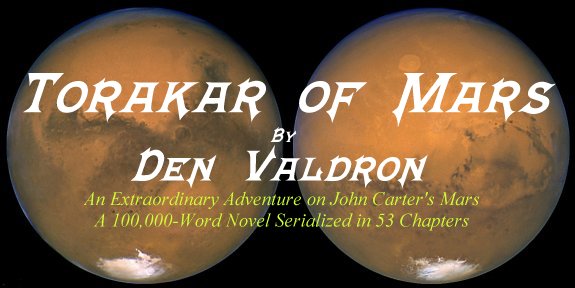
www.erbzine.com/mag15/1580.html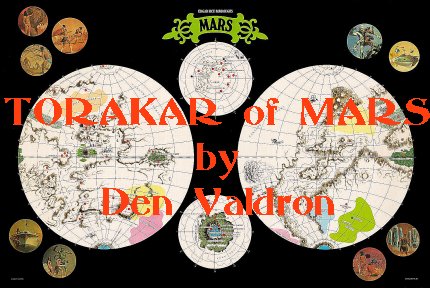
A 100,000-Word Novel Serialized in 53 Chapters
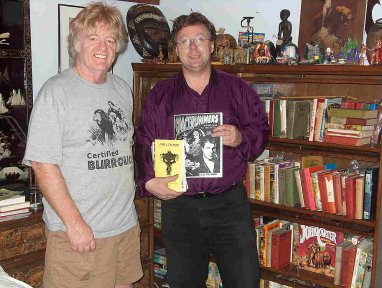
https://www.ERBzine.com/valdron
Bill Hillman and Den Valdron with part of the ERBzine Collection
Den holding some of his books to share with the Hillman Library
Do you still write for ERBzine?
I eventually ran out of fun ideas. There just seemed no place else to go.Actually, last year, I started to get some ideas again. Basically, I think it would be fun to do a series where we bring Burroughs little lost worlds into the modern era, where we merge them with the real history of the 20th and 21st centuries.
Take his Nova Roma. All right, itís been inaccessible behind mountains and marshes, itís a lost civilization in Tarzanís time. But for how much longer? Aircraft, bush planes are going everywhere. Once you know its there, or even suspect, you can fly in. Explorers have been there with Tarzan, the clock is ticking, its going to be exposed to the modern world.
What then? I mean, the world discovers a preserved fragment of Roman civilization? The archeologists, the anthropologists, the historians are going to have a field day! Do they have libraries? Thereís a chance weíll rediscover tons of Greek and Roman classics lost to history. Itís mind blowing. This is the era the Mussolini is in power in Italy, trying to revive the glory of old Rome. What would he do? Would he try to capitalize on it? Whatís the political shake out of a Roman relic? Their impact on European fascism?
And how would the Nova Romans cope? I donít think theyíd be allowed to retain slavery. Theyíre a stable urban literate martial civilization. Could they adapt to modernity? How would they change?
I think thatís fascinating.
Look at Pal-Ul-Don. You have this postage stamp territory, about the size of Luxembourg, so... itís large enough to be a small viable state. And its got a non-human civilization in it. Two non-human civilizations, although really, the difference is superficial. But itís got cities, communities, iron or bronze age technology, a complex social structure. And a literal lost world of flora and fauna, including Dinosaurs. This is like revolutionary game changing stuff for a dozen scientific disciplines, thereís huge religious and social implications.
What happens to Pal-Ul-Don? The natural barriers of millions of years no longer matter. It can be reached by airplane. What do the Colonial powers do? Does it get looted? Preserved? When Africa decolonizes, does Pal-Ul-Don become part of an African nation? A nation in its own right? Do they end up being some United Nations controlled enclave? How do the Pal-Ul-Dons cope with an evolving modern world? What can science learn from a surviving population of Dinosaurs.
There are all these lost cities, there are non-human cultures. What happens to Opar, La, the Frightful men, the Gorilla men? Surely thereíd be consequences, implications, histories to explore.
So why arenít you doing those?
Life got busy, Iíve just got too many projects. Iíd love to get to these, but thereís just so many things to do.From doing my ERBzine pieces, I eventually branched into alternative history. I got known for a few things - Land of Ice and Mice and Green Antarctica.
What are those?
Green Antarctica, itís a sort of extrapolation of Poeís Arthur Gordon Pym. Green Antarctica is a kind of horror history serial where Antarctica was never covered by ice. Instead, it gets inhabited by people who are eventually called the Tsalal who fear and hate the color white, and who build these civilizations that rival Europe and America. Captain Cook finds them, they capture and castrate him, and then they go on to confront the rest of the world.Theyíre kind of a dark mirror of us. They live in this horribly inhospitable environment and circumstances have lead them to make the horrible mistakes, but theyíre literally a challenge. A rival civilization which can go toe to toe. They develop gunpowder before metallurgy, so their weapons technology is based on rockets not guns. Their pathway is different, so they develop turbines rather than pistons.
Land of Ice and Mice is inspired by another writer, Jared Kavanaugh from Australia, who did a book called Walking through Dreams. Itís about agriculture and civilization emerging in Australia.
Ice and Mice has this wild concept - an Agricultural civilization emerging around the arctic circle, based on real plants and real farming techniques. Basically, in our history, about a thousand years ago, the Thule people swept out of Alaska and colonized the arctic, from Siberia to Greenland, with an efficient hunting package.I posited a tiny little cultural change, which would lead to the deliberate cultivation of certain plants, and eventually agriculture, and complex communities. I did it as a challenge. It just seemed hard.
Alternate history is a small, weird little community. But I seem to have a name there. Both Green Antarctica and Land of Ice and Mice have pages on TV Tropes.
|
PART I |
PART II |
PART III |
In ERBzine.com |
![]()

![]()
Volume
7856

BILL
HILLMAN
Visit
our thousands of other sites at:
BILL
and SUE-ON HILLMAN ECLECTIC STUDIO
All
ERB Images© and Tarzan® are Copyright ERB, Inc.- All Rights Reserved.
All
Original Work © 1996-2024 by Bill Hillman and/or Contributing Authors/Owners
No
part of this web site may be reproduced without permission from the respective
owners.